Abstract
An Integrated Vector Management (IVM) strategy was implemented from 1981 to 1985 in one part of Pondicherry, South India, for the control of the bancroftian filariasis vector Culex quinquefasciatus (the IVM area). The rest of the town (the comparison area) received the conventional larvicidal input. After 1985 both the areas were managed conventionally. The switch to conventional strategy resulted in an increase of vector density in both areas. The microfilaraemia prevalence in humans showed a general decline (P less than 0.05) from 1986 to 1989 only in the IVM area whereas its intensity did not change significantly in either area. While the age-specific rate of gain of infection was generally unchanged in the IVM area, an increase in all age classes was observed after 1985 in the comparison area, where the Annual Transmission Index was high during the previous years. In both areas the rate of loss of infection increased during 1986-9 compared to 1981-6. The results suggest that 3 years is too short a period to relate the changes in entomological parameters to those in the microfilaraemia status of the population.
Full text
PDF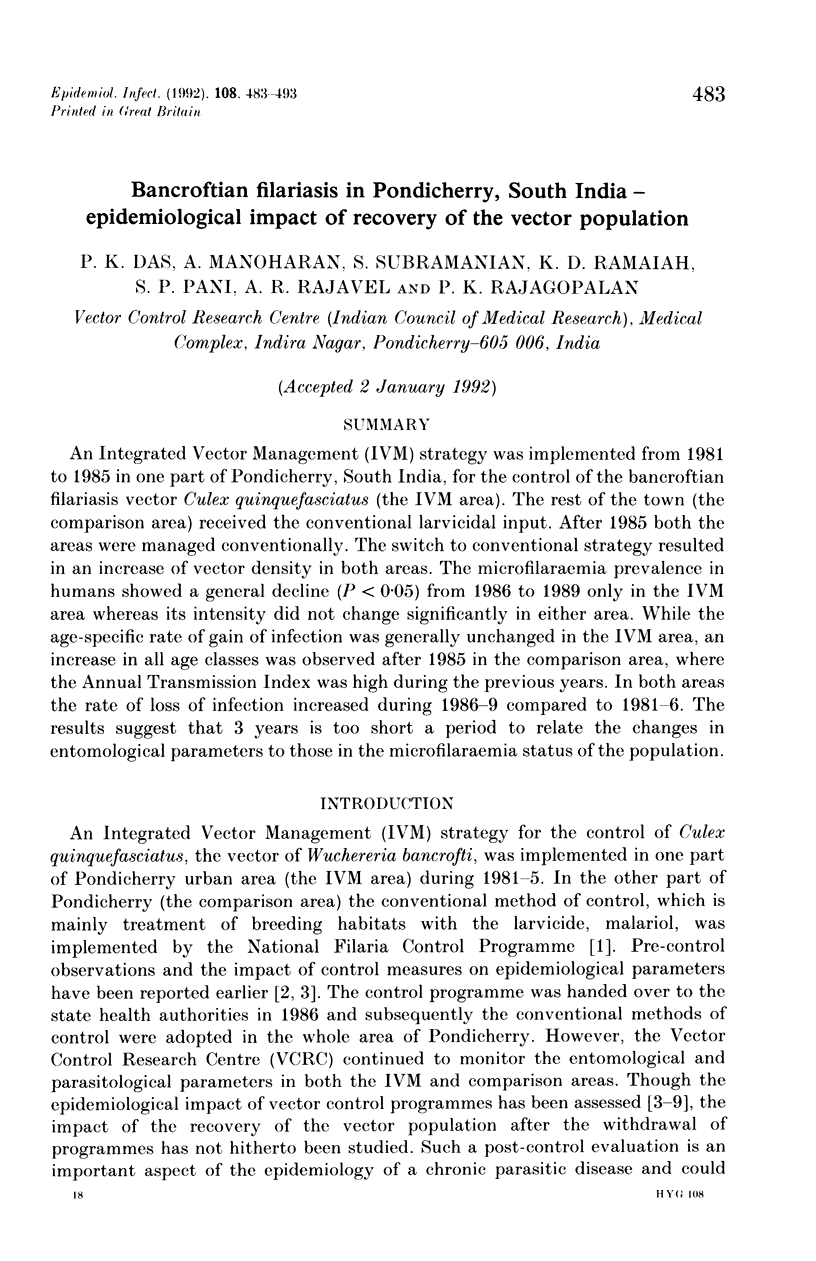
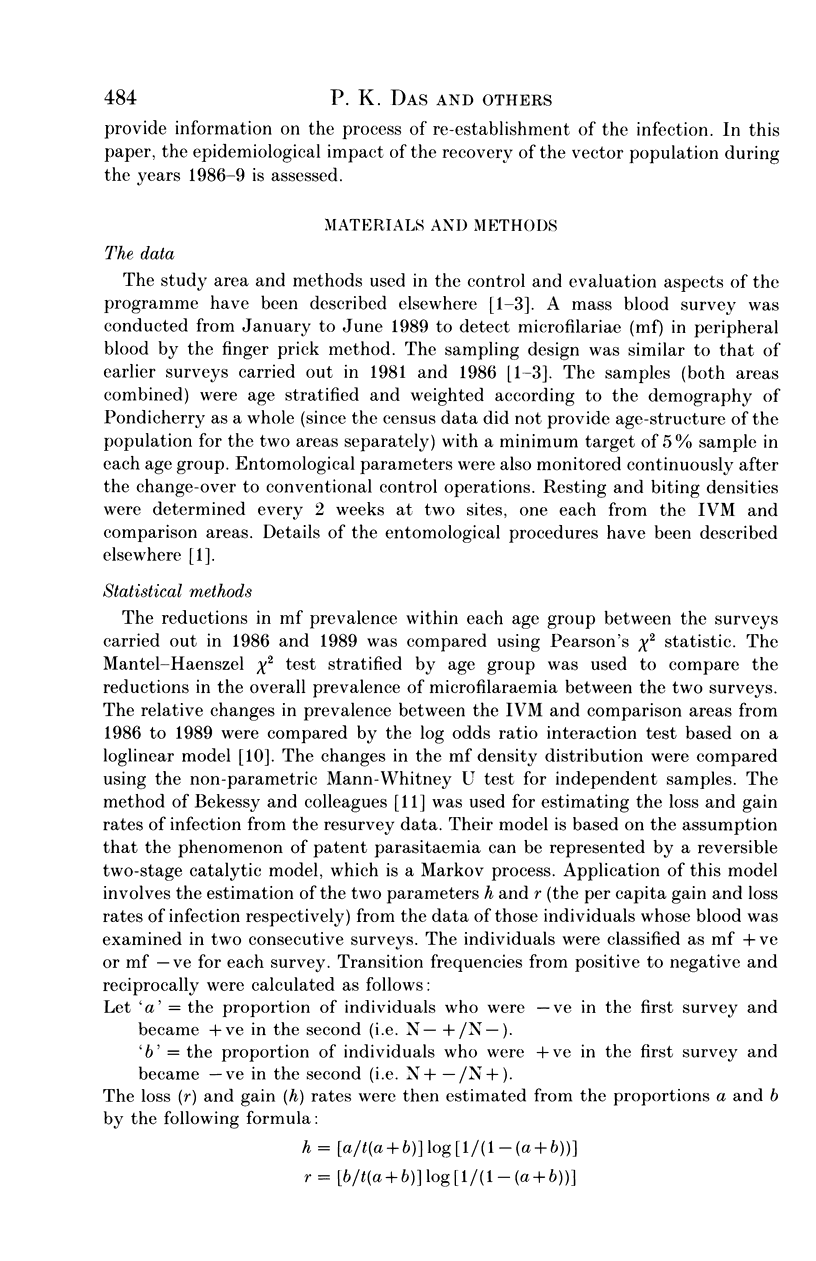
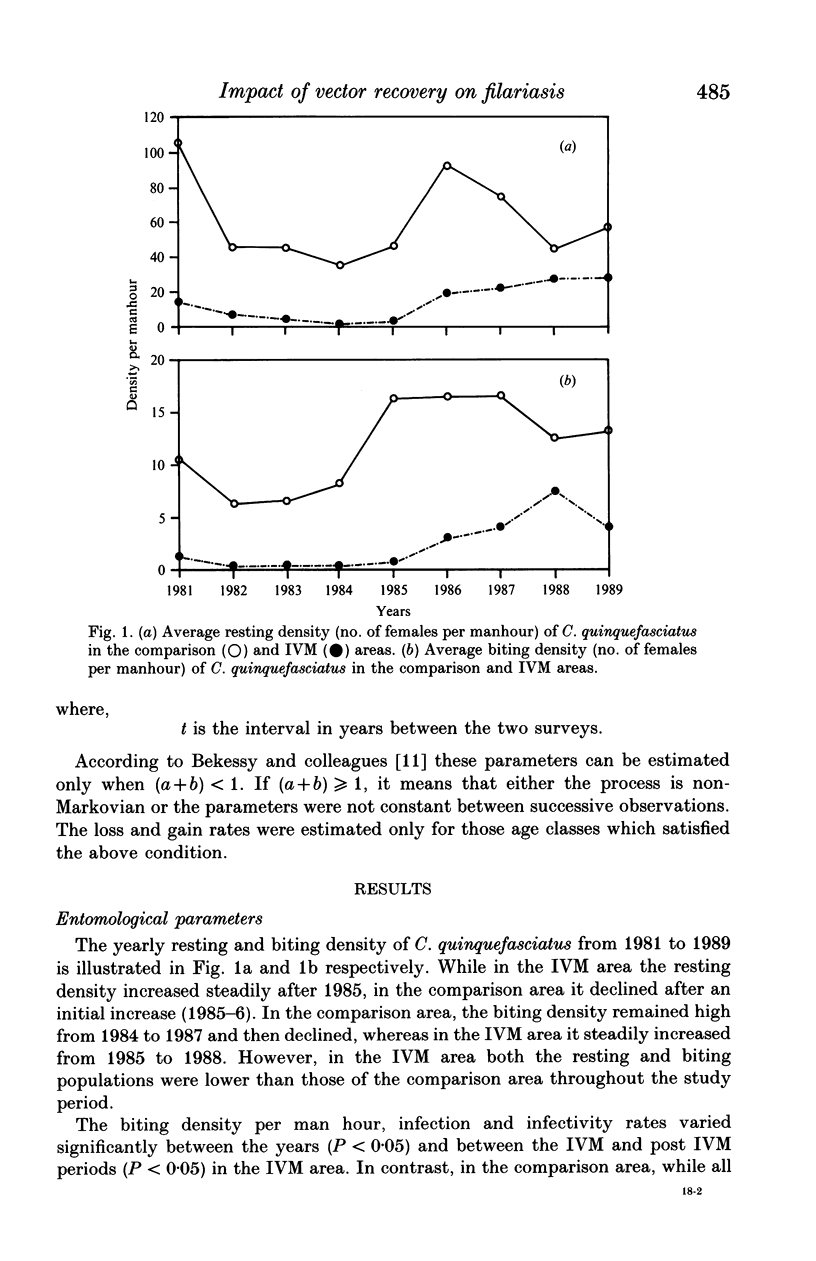
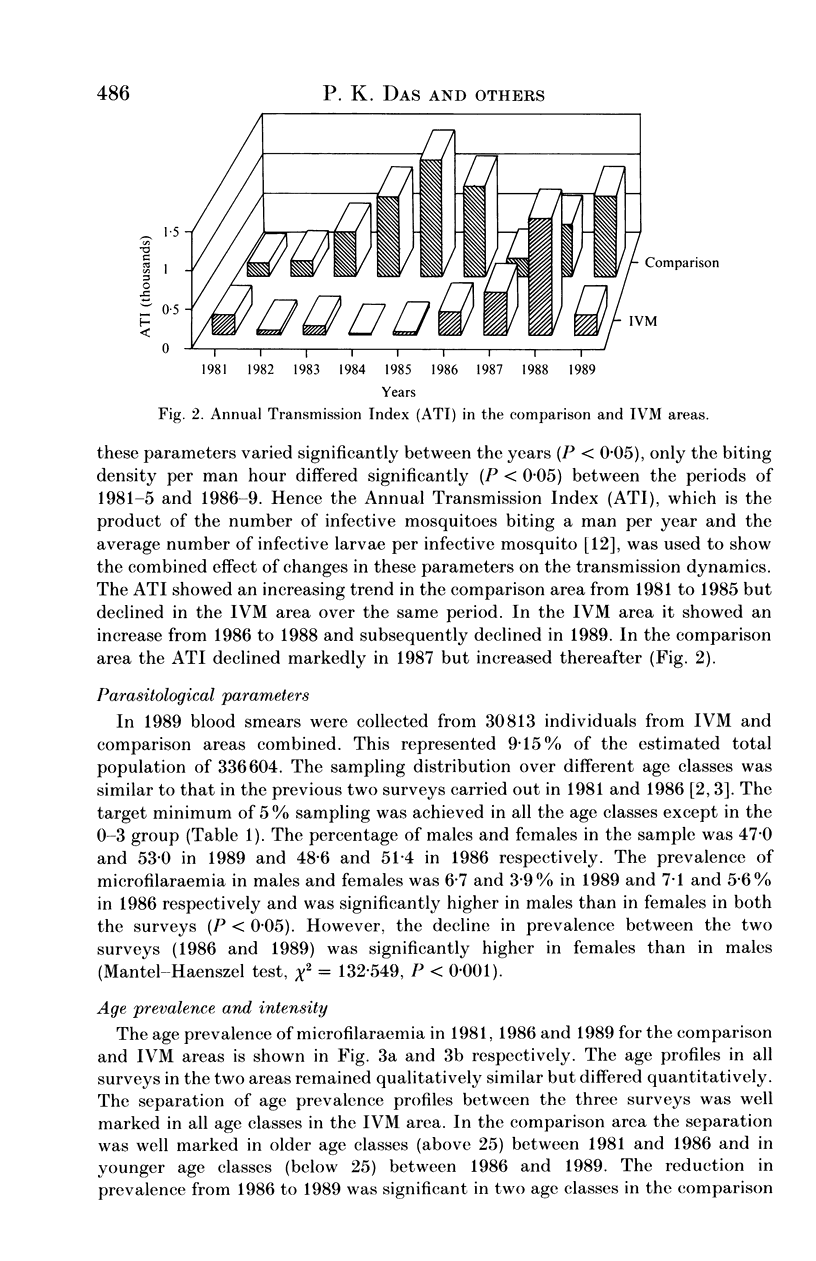
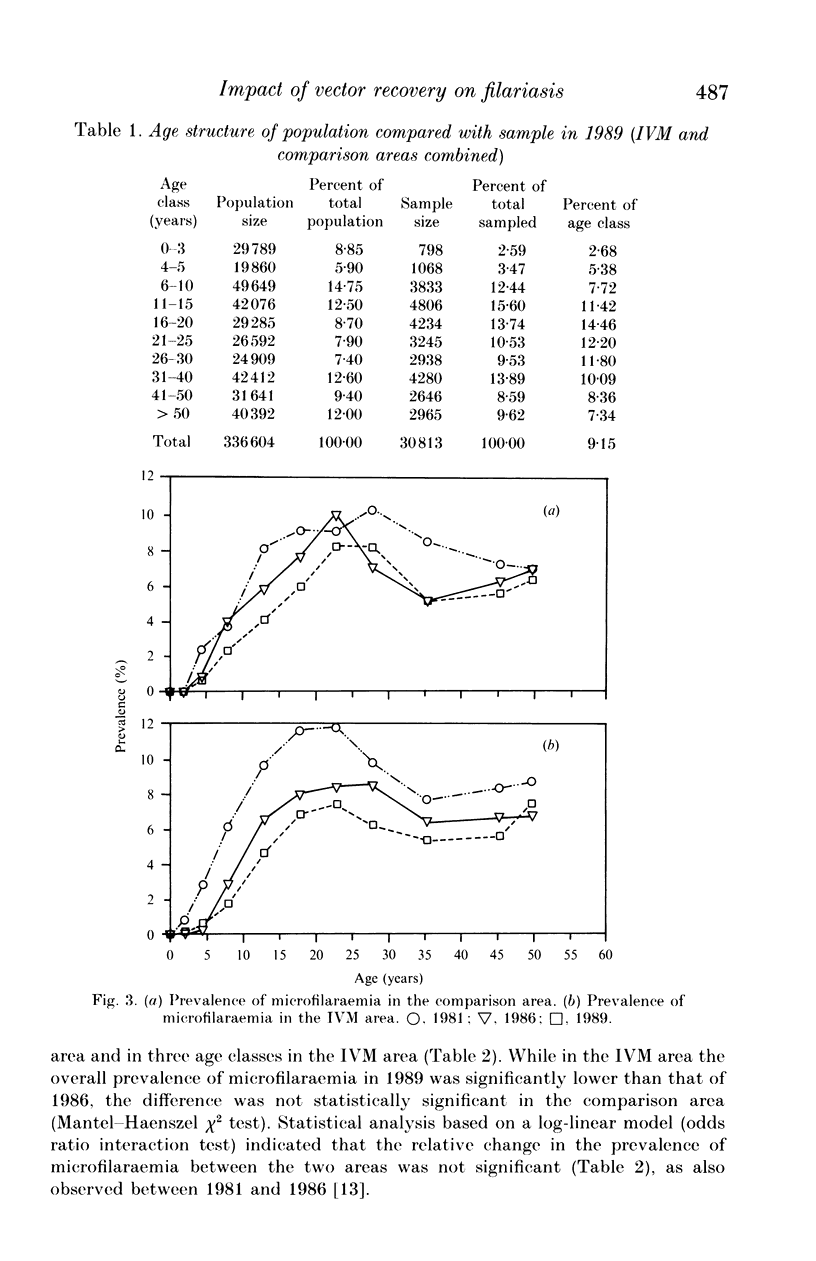
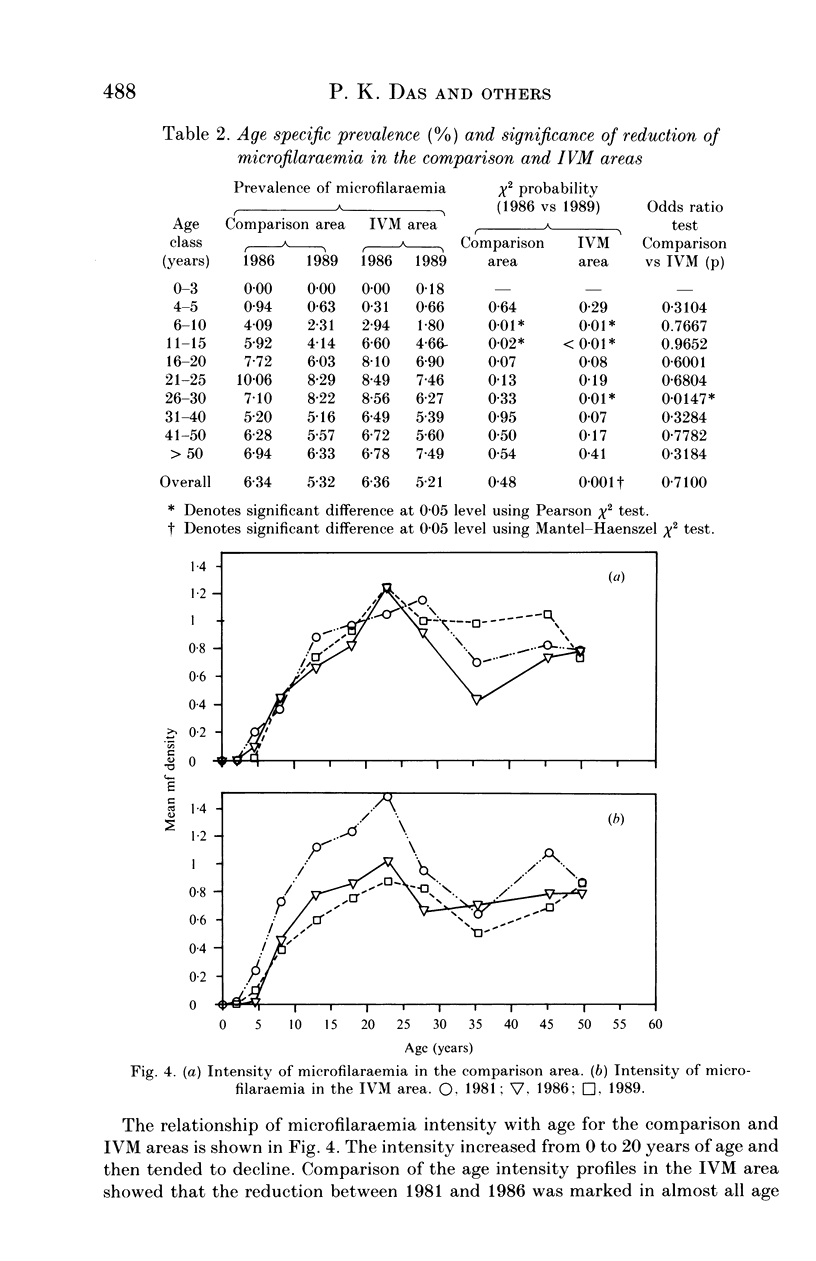
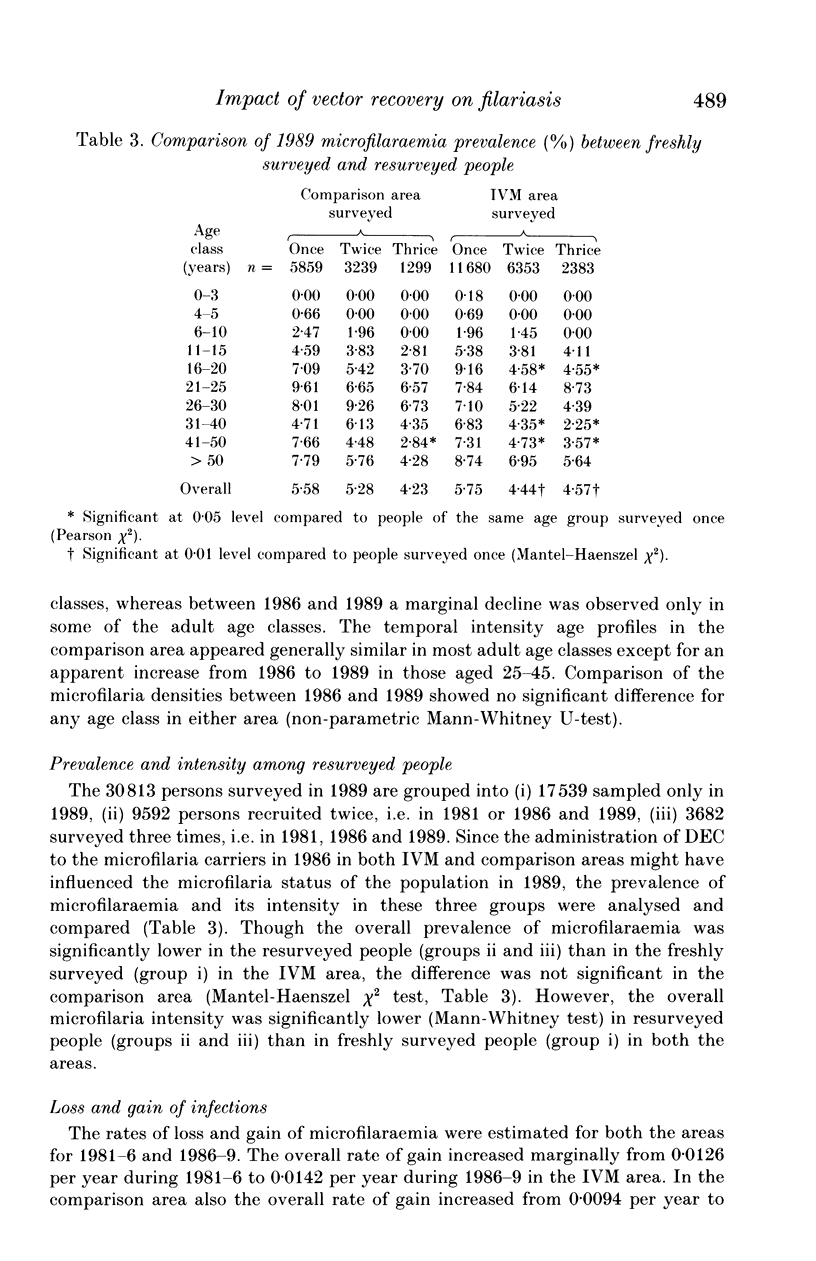
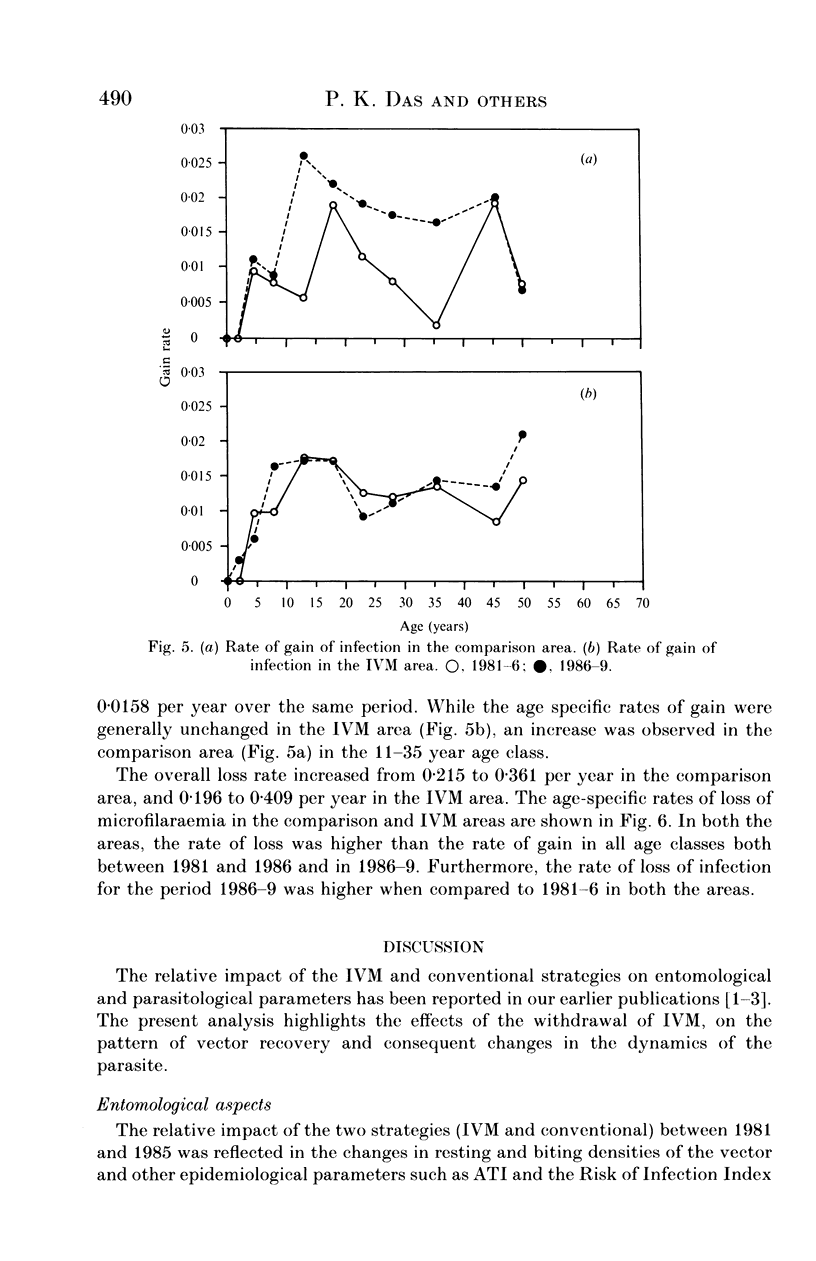
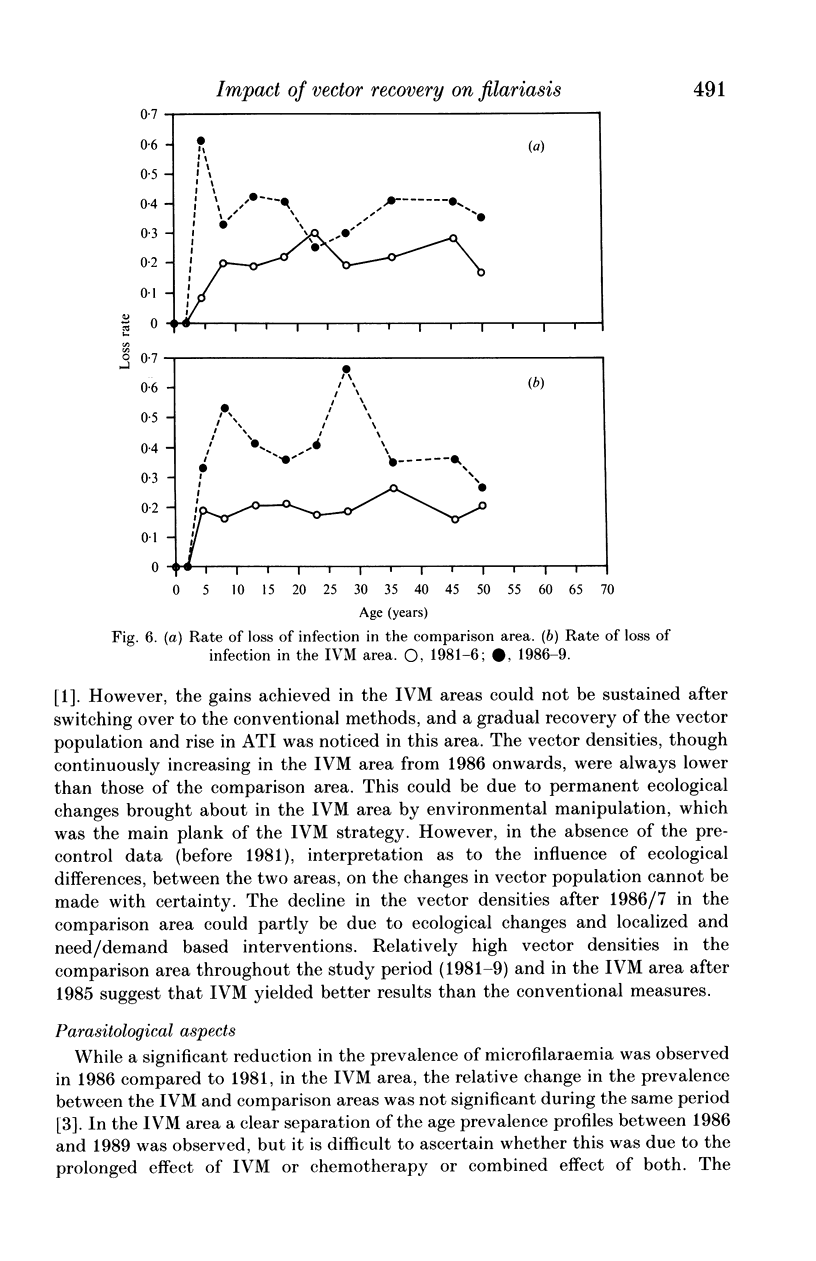
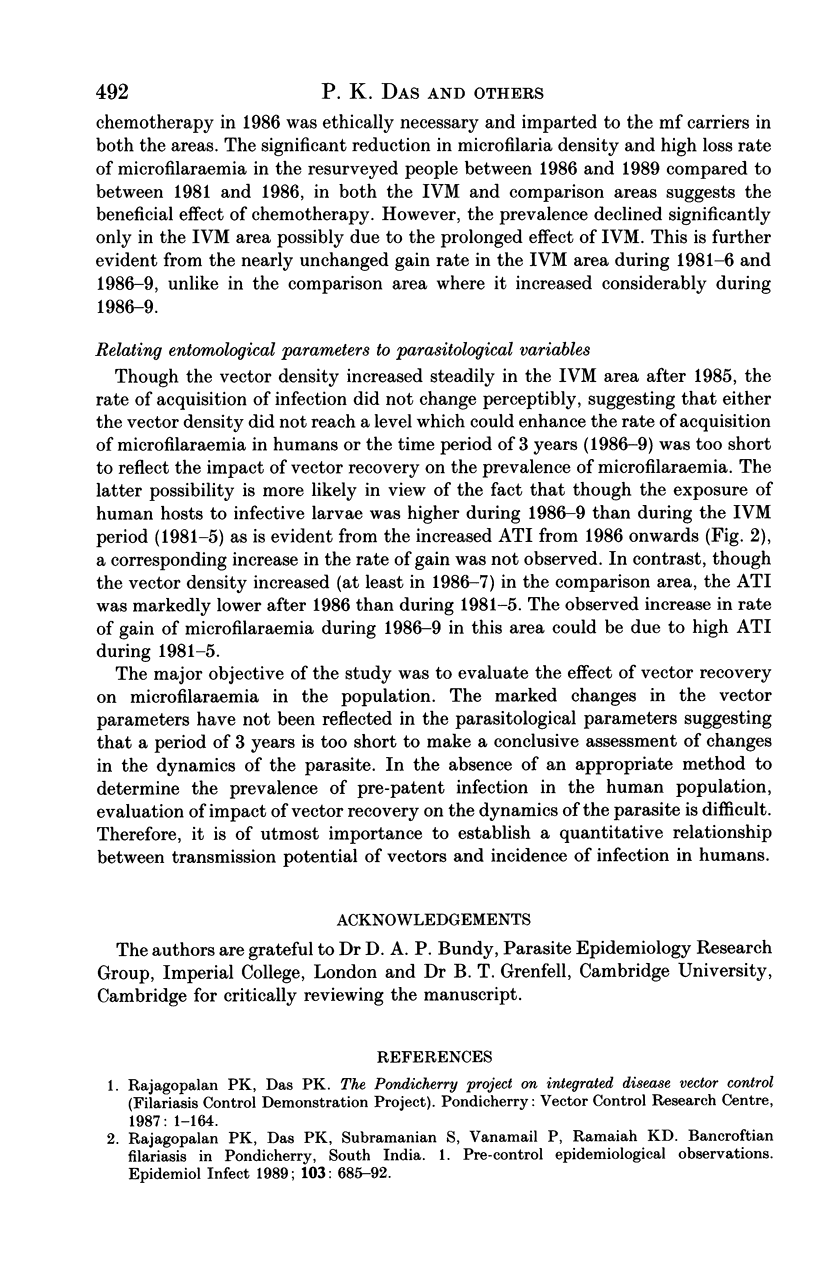
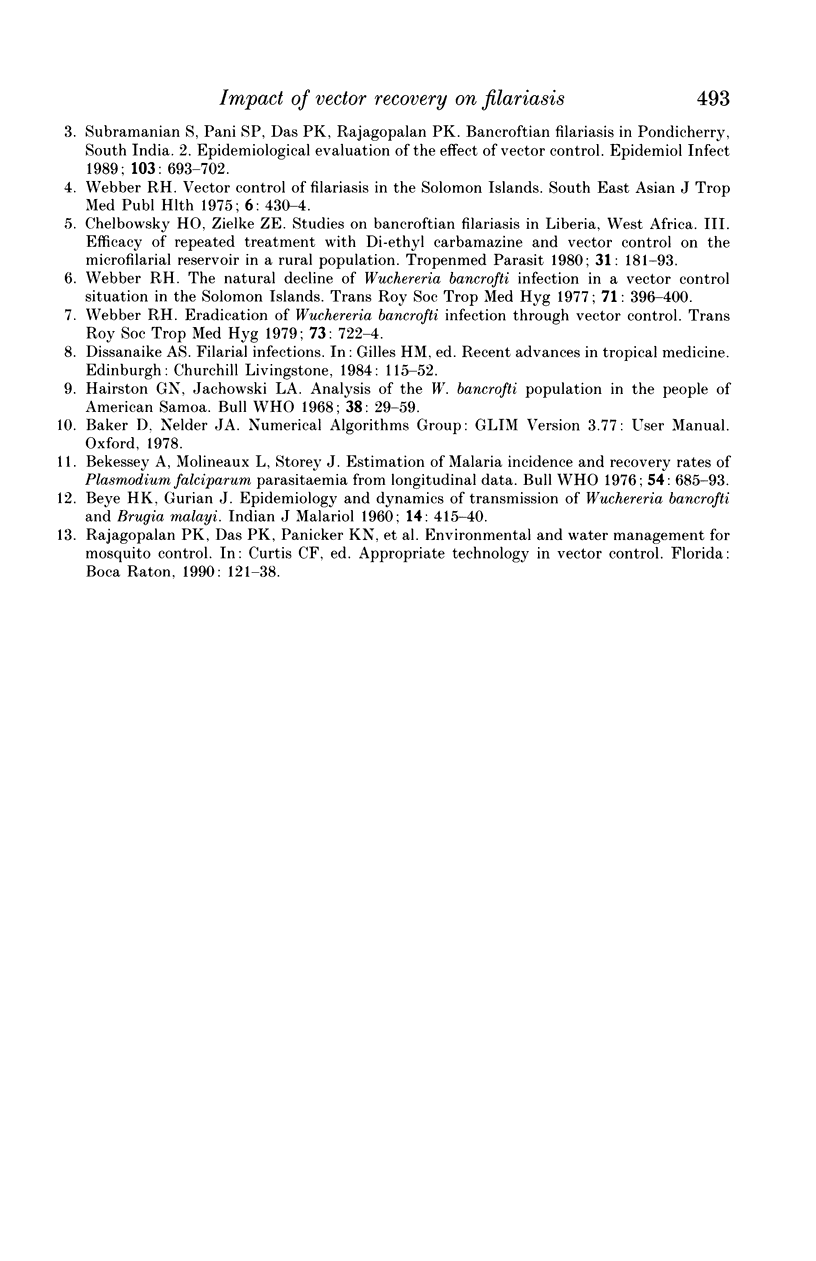
Selected References
These references are in PubMed. This may not be the complete list of references from this article.
- Bekessy A., Molineaux L., Storey J. Estimation of incidence and recovery rates of Plasmodium falciparum parasitaemia from longitudinal data. Bull World Health Organ. 1976;54(6):685–693. [PMC free article] [PubMed] [Google Scholar]
- Hariston N. G., Jachowski L. A. Analysis of the Wuchereria bancrofti population in the people of American Samoa. Bull World Health Organ. 1968;38(1):29–59. [PMC free article] [PubMed] [Google Scholar]
- Rajagopalan P. K., Das P. K., Subramanian S., Vanamail P., Ramaiah K. D. Bancroftian filariasis in Pondicherry, south India: 1. Pre-control epidemiological observations. Epidemiol Infect. 1989 Dec;103(3):685–692. doi: 10.1017/s0950268800031083. [DOI] [PMC free article] [PubMed] [Google Scholar]
- Subramanian S., Pani S. P., Das P. K., Rajagopalan P. K. Bancroftian filariasis in Pondicherry, south India: 2. Epidemiological evaluation of the effect of vector control. Epidemiol Infect. 1989 Dec;103(3):693–702. doi: 10.1017/s0950268800031095. [DOI] [PMC free article] [PubMed] [Google Scholar]
- Webber R. H. Eradication of Wuchereria bancrofti infection through vector control. Trans R Soc Trop Med Hyg. 1979;73(6):722–724. doi: 10.1016/0035-9203(79)90031-2. [DOI] [PubMed] [Google Scholar]
- Webber R. H. The natural decline of Wuchereria bancrofti infection in a vector control situation in the Solomon Islands. Trans R Soc Trop Med Hyg. 1977;71(5):396–400. doi: 10.1016/0035-9203(77)90037-2. [DOI] [PubMed] [Google Scholar]
- Webber R. H. Vector control of filariasis in the Solomon Islands. Southeast Asian J Trop Med Public Health. 1975 Sep;6(3):430–434. [PubMed] [Google Scholar]


